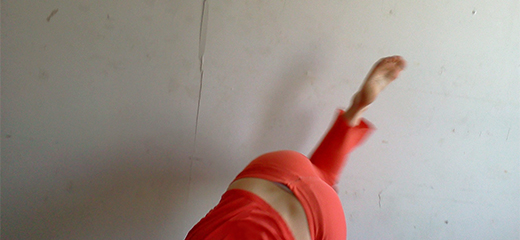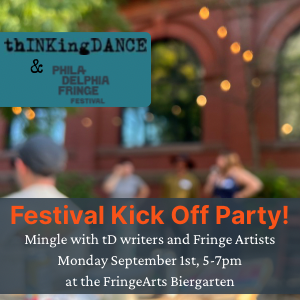
DANCE WITH CAMERA: A Sequence in Fifteen Stanzas
by Asimina Chremos and Ditta Baron Hoeber



I’m dancing between the white-ish wall and a woman in a simple, almost shapeless long black dress. Her hair is grey and white. Her steps in her soft black shoes are soundless as she follows me, watches me, hovers at the edge of my kinesphere. I continue the endless pattern of my dance, and now the woman in black and I are doing a duet. Her name is Ditta, and she is an artist I met at a dinner party, but I begin to think of her as Greek great-grandmother Krystallo, the one whose dowry included a cow of pomegranate color. I become aware that my hair is short, I’m not wearing a bra, I have no husband, no children, no livestock, no loom. Krystallo is peering at me from 100 years ago. She is examining me, following my alien dancing that has no rhythm.


My dancing is called “improvisation,” I tell Krystallo, with my mind. It’s a spontaneous solo of my own feelings, my own being, like the zeibekiko. I’m free. I can do what I like with my body. I can feel all of its sensations. I show her the top of my head, my back, my neck, my fingers, my arms, my thigh, my foot, all in various relationships to gravity: upright, upside-down, sideways. I guide and follow my bones, moving my limbs in arcs and lines; my fingers weave invisible webs in the air.


It is daytime. If I face Ditta with my back to the not-so-white wall, the grayish sunlight passes through the window and pushes softly into the left side of my face. I reign in the momentum of my larger gestures, making sure not to touch my partner or surprise her with unexpected surges. Physical contact is not part of the contract of our duet. I will not touch her, but the light touches me, and it touches her eyes, and we are connected that way. We are both doing what we do, simultaneously. I am dancing and being seen, she is looking and taking pictures.


April 22, 2015






